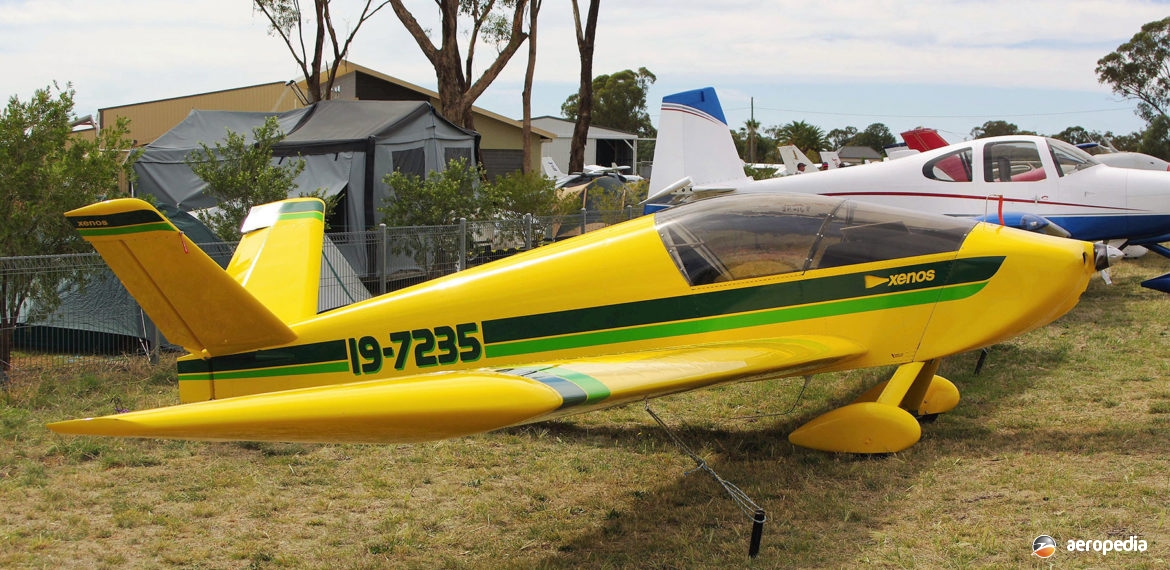Photograph:
Sonex Aircraft Xenos 19-7235 (c/n 35) with an Aerovee engine at Temora, NSW in March 2013 (David C Eyre)
Country of origin:
United States of America
Description:
Two-seat light self-launched glider and sport aircraft
Power Plant:
One 90 kw (120 hp) Jabiru 3300 four-cylinder horizontally-opposed air-cooled engine
Specifications:
- [Utility role]
- Wingspan: 13.95 m (45 ft 8 in)
- Length: 6.06 m (19 ft 9 in)
- Height: 1.49 m (59 in)
- Wing area: 14.67 m² (158 sq ft)
- Manoeuvring speed: 185 km/h (115 mph)
- Stalling speed: 71 km/h (44 mph)
- Cruising speed at sea level: 193 km/h (120 mph)
- Cruising speed at 2,438 m (8,000 ft): 225 km/h (140 mph)
- Take-off roll: 76 m (250 ft)
- Landing roll: 91 m (300 ft)
- Service ceiling [calculated]: 10,363 m (34,000 ft)
- Rate of climb: 427 m/min (1,400 ft/min)
- Range 563 km: (350 miles)
- Fuel capacity: 60 litres (13 Imp gals)
- Empty weight: 345 kg (760 lb)
- Useful load: 234 kg (515 lb)
- Baggage capacity: 18 kg (40 lb)
- Loaded weight: 578 kg (1,275 lb)
History:
Following the success of other aircraft in the Sonex range, John Monnett designed the Xenos which was aimed at bringing the cost of motor gliding to an affordable level. It used the same easy-to-build construction technique using 6061 aluminium as was used on the Sonex and Waiex. It was available with utility wingtips which could be removed to fit inside a 12.19 m (40 ft) hangar, and could be quickly interchanged with optional aerobatic wingtips. In the United States it could be flown as a Sport Pilot / LSA aircraft, or flown by pilots holding a glider rating with a self-launch endorsement. It doule be used as a sport aircraft using power, a self-launched glider that coule soar with the engine off, or it coule motor-soar over distances with good fuel economy. It was only available in kit form.
It could be fitted with the 90 kw (120 hp) Australian-built Jabiru 3300 engine or the 60 kw (80 hp) AeroVEE 2180 four-cylinder engine. G factors were +4.4 G or -2.2G for the aircraft in the utility role. Wingspan for the utility aircraft was 13.95 m (45 ft 8 in) or 12 m (39 ft 4 in) in the aerobatic role with a single pilot.
A number have been registered under RAA regulations, but one became VH-ZPW (c/n 025) to its owner at Temora, NSW in April 2016.
Development of the series has continued, the Xenos-B being introduced to the range in 2016, this model having more room and comfort, more panel space, more fuel, a larger range of engine choices, a glide ratio of 24:1 and a wingspan of 14.02 m (46 ft) which gives good soaring performance.

